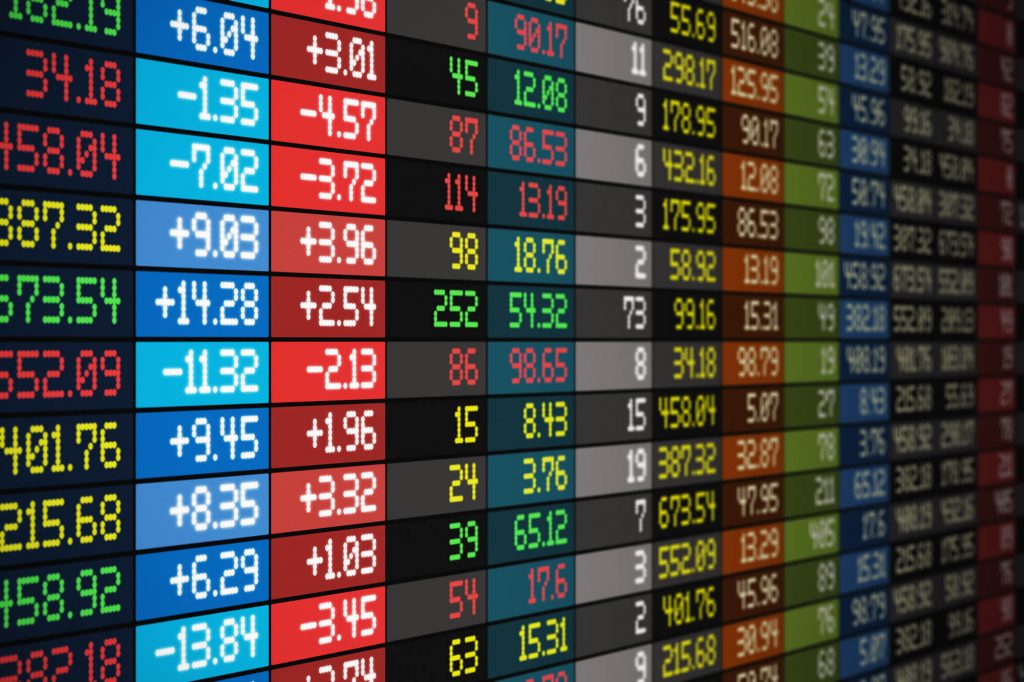The stock market is a flexible financial instrument. Investors can profit from it in several different ways.
One method that’s been gaining traction with the rise of retail investing is swing trading. With the right swing trading strategies, investors can realize a series of small to medium gains in shorter amounts of time. Swing trading stocks consistently over a series of months can result in surprisingly big profits.

What is Swing Trading?
Stock market investors take different approaches to trading. Many investors focus on the long term. They leave their investments alone for the most part, buying and selling shares infrequently. They hold on to stocks that generate dependable, but unspectacular profits.
Others set more short-term goals. Day traders focus on trades over a single day. They strategically buy and sell shares within one trading session to take advantage of immediate price jumps and declines.
Swing trading is somewhere in the middle of these two styles. It focuses on short- to medium-term gains. Traders hold onto their shares for a limited time, usually for a couple of days to a few months. The aim is to profit from expected price moves over that period.
The thinking behind swing trading is to earn more modest gains quicker. A swing trader may aim to earn 10% on a certain stock over 15 or 20 days, rather than earn 25% over a couple of months.
The key to swing trading is to maximize incremental gains over a limited window of time, instead of shooting for a big payday. It also involves a stricter level of loss management than long-term traders employ. Experienced swing traders unload stock shares earlier than long-term investors do. Instead of setting their stop-loss limits at the typical 7% to 8%, swing traders sell when a stock price drops by only 3% or 4%.
Technical analysis plays a huge part in swing trading. Investors track and research historical price changes, revenue, and other kinds of data to make decisions. Short-term investor sentiment is another key aspect to swing trading. Fundamental analysis can be helpful, but not quite as much as other forms of analysis.
What Are the Advantages?
Swing trading presents a few benefits for investors that are willing to take on the risks.
Easier Trading Schedule
Swing trading is ideal for investors with heavy work schedules or busy lifestyles. They don’t have to constantly monitor the stock market like day traders do. They do need to be more active than the passive “set it and forget it” investor. But they don’t have to key in to watch every little movement in their portfolios over the course of a day. It’s a more relaxed, lower-stress trading style.
More Manageable Portfolios
Because of that easier schedule, swing traders are less tempted to make hasty transactions. They have the luxury of more time and thought before buying or selling. This results in a more stable portfolio than many day traders have. But it’s not a stagnant one, like most passive investors can have.
Solid Returns in Less Time
Swing traders aim to generate modest gains over a shorter period of time. A common objective is to find stocks that will turn 5% to 10% profit within a few days to a month or so. That’s achievable in swing trading. Doing this on a consistent, regular basis makes those modest gains add up.
Short Tie-Ups of Capital
Long-term traders leave their investments alone. While they may have a few dependable stocks that generate modest returns, they may also have money locked into losing stocks. Swing traders cut their losses more quickly. They don’t leave their capital in a bad stock in hopes of a rebound that may never come.
Less Transaction Cost
Although most online brokerages have done away with per-trade transaction fees, some still charge a modest amount. Swing traders who do pay the occasional transaction fee don’t have to spend as much as day traders do.

What Are the Risks?
While not as inherently risky as day trading, swing trading does expose investors to a few risks. These risks should be considered in every swing trading strategy.
Off-Hours Price Gaps
Swing traders leave their orders open when the stock market is closed, whether that is overnight or on the weekends. This leaves their orders susceptible to off-hour price changes in their stock, which can happen after the release of earnings reports or other kinds of unexpected news. If a swing trader issues a stop-loss order, it’s meaningless in the face of sudden off-hours price drops. That can result in a major loss of an investor’s capital.
Missing Out on Successful Long-Term Investments
Every once in a while, a modest stock breaks out to become a major success. But this usually takes time. In 2009, Netflix’s stock price hovered around $9; in early 2021 it was more than $500. When using a swing trading strategy, most only hold their positions for a few weeks or months at most. So they may miss out on stocks like Netflix that can benefit long-term investors over many years.
Timing the Market
“Don’t try to time the market” is a mantra for long-term investors. It’s extraordinarily hard to find precise points for buying or selling stock shares for maximum value. But timing the market is part of the swing trading strategy to a certain extent. Even though swing traders don’t have to do it as intensely as day traders, they still have to do it. Only with a few years of solid, constant experience can top swing traders learn to time the market. Even for experienced traders, it’s a big risk.
More Analysis Required
Swing traders need to do a lot of research. They rely on extensive charts and mountains of statistics to succeed. That kind of technical analysis doesn’t come easy to most novice swing traders. But it’s a hard fact of the business — you just can’t be a swing trader without it.
Larger Commission Fees Than Long-Term Trading
Again, this may not be an issue for you, since most online brokerages no longer charge transaction fees. But if yours does, you’ll incur more charges per trade than passive investors.
While these risks are significant, it’s important to remember that all stock traders face risks. Day traders and passive investors face dangers, as well. Trading on the stock market requires knowing your risk tolerance. Swing trading strategy is no different.
Basic Swing Trading Strategy
The first step in learning how to swing trade is to understand the basic goals and framework.
Setting Goals
The goal of swing trading is more modest than day trading and greater than long-term trading. Day traders shoot for consistent daily gains between $200 and $400. That’s a pretty high expectation, depending on the commodities they trade. Long-term investors may shoot for a return of 20% to 25% on any given stock. But that goal encompasses longer time frames, possibly even several years.
Swing traders typically aim for gains of 5% to 10% over a short time. Some say your goal should be to trade in less than a week; others say it’s best to shoot for a handful of months. The average swing trader, for what it’s worth, holds onto positions between 5 and 10 days.
Profit-Loss Ratio
Trading success for short-term investors is often expressed in terms of the profit-loss ratio. That’s a simple comparison of winning trades to losing trades. A trader who has $1,000 in profits and $500 in losses has a profit-loss ratio of 2:1.
A good profit-loss ratio goal for swing traders is 3:1 — again, this should be measured over a few days or weeks. This is not quite as short as day traders, who often shoot for a daily profit-loss ratio of 5:1.
Limiting Losses
The key to swing trading success is loss management. All investors experience occasional losses in their portfolios. The best traders factor in those losses and focus on limiting them.
The stop-loss order is the way that investors manage their losses. When an investor places a stop-loss order, they sell their shares after the price drops to a certain point. In traditional trading, many investors place stop-loss orders for declines in value of 7% or 8%. When a stock drops by 7% or 8% of what they paid for it, it’s automatically put up for sale.
Swing traders need to be stricter about managing loss. For these traders, a good range for executing stop-loss orders is 1% to 3%. This will prevent major losses, while still allowing profits to be made from several “small” wins.
Looking for Patterns in Swing Trading Stocks
The main instrument for advanced swing trading strategy is technical analysis. This involves studying and looking for patterns in stock price charts. These charts are often easily accessible on brokerage and financial sites for every stock.
Swing traders look for patterns to determine the general direction of a stock’s price movement. The following are some of the more common patterns in swing trading strategies.
Head and Shoulder
Head and shoulder patterns represent three different price peaks. The first is when a stock’s price hits a peak, then retracts a bit. The second is when it hits a peak higher than the last one before declining again. The final peak hits the same height as the first peak before going down. The image looks like a head positioned between two shoulders. It generally represents that a trend of upward movement is close to ending.
Flag
A flag pattern looks like — wait for it — a flag attached to a flagpole It shows a very sharp, short movement (the pole), followed by a slightly longer counter-movement (the flag). After the second movement, the stock price goes back to the movement represented by the flagpole. Swing traders use flag patterns to find points in upswings or downswings to obtain modest profits.
Cup and Handle
A cup and handle pattern is shaped like a “U” with a small dip on the right side. It represents a long period during which the stock price drifts to a low point and then gradually regains its value. Next, it experiences a smaller drop-off before rising again (the “handle”). The cup and handle pattern signifies a bullish trend. Swing traders may issue a stop-buy order near the upper point of the “handle” to maximize returns.
Other patterns swing traders look out for include the wedge, rounding and double bottom, the double top, and the pennant.
Support, Resistance, and Channels: More Swing Trading Strategies
Support and Resistance
Support and resistance levels are vital parts of a technical stock analysis. They refer to the way that a given stock is trending and can be used to suggest the best points for buying or selling. Swing traders track these levels with charts that show price movement in daily increments.
The support level is a point above the current stock price where buying is strong enough to overcome the pressure to sell. It’s where swing traders aim to buy a stock before it goes up in price.
As you probably expect, the resistance level is the exact opposite. It’s the price point where there’s more pressure to sell and no incentive to buy. Since swing traders issue stop-loss orders between 1% to 3% of loss, resistance levels are usually narrower than support levels.
Channel Trading
Channels indicate a broader range of support for resistance trends. They’re measured over multiple increments. An ascending channel displays a stock that is moving upward. You’ll see price highs and price lows, but the rises will outnumber the declines. Descending channels represent the opposite. Horizontal channels show very little variation.
Some channels track more precise movements in a stock’s price. They’re frequently used by swing traders to get more exact indications of good points at which to buy or sell. For example, a Donchian channel consists of three lines. One marks the highest price over a given period (typically 20 days), another marks the lowest, and one in the middle represents the median between high and low.
The Bollinger Band® also has three lines: Price highs and lows and the ongoing moving average between them. It employs standard deviations to track periods in which stocks are more volatile or more steady. When the lines reach a breakout point, it’s time to make a major move, whether that means buying or selling.
There are several other kinds of channels: The Fibonacci channel, the Keltner channel, and STARC bands. Whichever you choose, don’t rely on just one of them. Successful swing traders use three or more at once, often overlapping them for more complex views.

Gorilla Trades: The Home Base for Swing Traders
Whether you’re just learning how to swing trade or have some years already under your belt, Gorilla Trades can supplement your portfolio with winning, data-driven stock picks. Sign up for a free trial to find out more.




